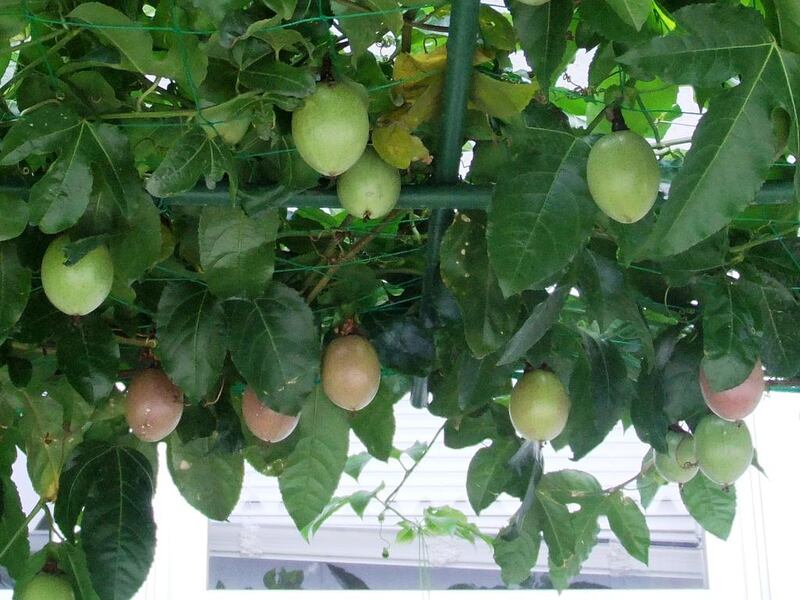Tokyo // Visitors and passers-by at Kyocera Corporation’s plant in the city of Okaya, in Japan’s Nagano Prefecture, marvel at the luscious greenery enshrouding the building.
But they would be mistaken in assuming it is merely a decorative addition. In fact, the plants are “green curtains” used to cover a building’s walls and windows, providing shade for the rooms inside and lowering their internal temperature.
A green curtain is created by training climbing plants such as gourd or morning glory to cover a building facade. The curtain’s ability to block out the direct rays of the strong summer sun allows for energy use reductions in air conditioner units and, thus, overall cuts in CO2 emissions.
Sekisui House, an Osaka company focusing on design and construction of buildings and landscape, civil engineering and urban development, has made green curtains one of its core business activities.
Offering service to clients in the high-end “lifestyles of health and sustainability” sector, a demographic defining a particular market segment related to sustainable living and “green” ecological initiatives, Sekisui House puts up living curtains of gourd, morning glory, vine-spinach, ivy or climbing fig on office buildings. Customers can also opt for garden medium shrubs, depending on the structure of the curtain to be made.
Several companies specialise in green curtain maintenance, although many of Sekisui House’s clients undertake their own maintenance, says the company’s public relations chief, Masayoshi Kusunoki.
Heat reduction differs depending on the location and scale of the building, and the type of plants used for green curtains, Mr Kusunoki says. “Although this is an average figure, if the building is in the central area of Japan, where heat from the sun is severe in summertime, 80 per cent of [incoming] solar heat can be reduced,” he says.
Sekisui House cannot give a precise figure for investment in its technology, as it is the result of both research and experiments undertaken at its facilities, as well as development done when implementing work orders for clients, Mr Kusunoki says. “We use know-how gained by R&D, such as artificial soils, materials for rooting on walls, irrigation equipment, plant maintenance, et cetera,” he says.
Other smaller companies also manufacture green curtains. Many firms, although, do so on their own buildings as a corporate social responsibility activity. Such is the case with Kyocera, a multinational electronics and advanced ceramics manufacturer.
Based in Kyoto, Japan’s former capital, Kyocera started growing green curtains at its Okaya plant in 2007 in cooperation with the city government and a non-governmental organisation, with the goal of further reducing the factory’s environmental impact. To date, green curtains have been expanded to a total of 27 company sites throughout the country.
Kyocera also encourages its employees, as well as local residents, to participate in the initiative in their own homes by providing seedlings produced by the green curtains. The company mostly uses gourd and morning glory for its coverings, although some feature passion fruit, navy bean, sponge cucumber and mini Japanese squash.
Kyocera employees also enjoy a byproduct – dishes made with vegetables harvested from the green curtains at company cafeterias or at home.
Employees from the company’s environmental and general affairs divisions plant the curtains and take charge of their maintenance. Aside from fertilizers, maintenance costs are almost nil, says the Kyocera spokeswoman, Natsuki Doi. “However, this is done in [Japan’s very hot] summertime and effort must be devoted to watering,” she says.
The use of green curtains allows an average 2°C reduction at Kyocera’s facilities, which correspondingly reduces air conditioning expenses, although the company says it cannot calculate the resulting monetary savings. “We consider green curtains as an energy-saving activity rather than a money-saving one,” Ms Doi says. Still, using less energy obviously costs less money.
That up to 30 per cent of power can be saved using green curtains is mainly down to two reasons. The first is that green curtains prevent the Sun’s rays from coming into the building. The second is that the plants’ transpirational effect of evaporation keeps green curtains themselves fairly cool, which prevents an increase in the temperature of the building surface, says Takao Tamura, an associate professor in the department of civil and environmental engineering at Tokushima University’s Graduate School of Science and Technology.
Hirotaka Suzuki, a professor at Josai International University’s Faculty of Social and Environmental Studies, who specialises in urban and building greening, says that according to the results of experiments he has conducted during the hottest summer period, by installing a green curtain, it was possible to reduce room temperatures by 3 to 4°C.
Temperatures remained stable at about 28°C at night as well, Mr Suzuki says. “In short, we were able to alleviate rapid room temperature changes,” he says.
Individual constructions such as detached houses, multi-family houses, high-rise apartment blocks, office buildings and monuments are also adopting green curtains, and demand will increase in the future, Mr Kusunoki says.
“However, we believe the highest business growth potential would be in the low and middle-class multi-dwelling houses of about three or four storeys,” he says.
To further improve green curtain business prospects, two things need to be considered, says Mr Tamura. One is improving plant breeds and encouraging businesses to sell those plants’ seeds and seedlings. The other is the planning, manufacturing and sale of goods that make it easy to train and maintain green curtains.
As of now, people still think green curtains cannot be made and maintained easily, and the task ahead is to make the job look easier and more achievable, Mr Tamura says.
“To that end, I think it is necessary to develop tools that make it easy to make green curtains, and to produce plants that can be bred easily and provide a great effect.”
It seems there is a growing opportunity for the commercial development and uptake of such ecological solutions.
business@thenational.ae
Follow The National's Business section on Twitter





